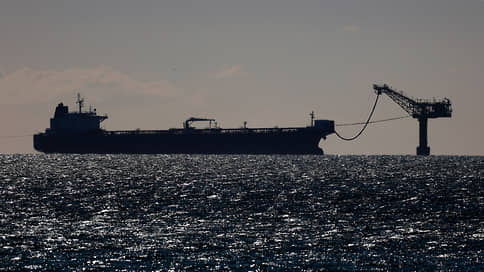India explains the decline in oil purchases from Russia by tightening sanctions
[ad_1]

India, the largest importer of seaborne shipments of Russian oil, has increasingly begun to seek lower prices for raw materials from the Russian Federation. Indian authorities explain the break in oil purchases from the Sakhalin-1 project by the desire to comply with the terms of the oil price ceiling, the terms of which were tightened by the United States in December. The lack of agreements between the Russian Federation and India has led to the fact that about a dozen loaded tankers with Sakhalin oil are now idle at sea, awaiting unloading.
Russian tankers are facing problems unloading oil at Indian ports due to the tightening of the G7 oil price ceiling and sanctions against shipping companies, according to a statement by Indian Oil Minister Hardeep Singh Puri on January 16. “In the case of Russia, it’s a matter of the oil price ceiling, and also the fact that some of their shipping companies have received unwanted warnings,” Bloomberg quotes an Indian official. “When Russian prices don’t match, we buy from Iraq, the UAE, Saudi Arabia.”
We are talking about the supply of Sokol oil from the Sakhalin-1 project, which includes the Indian ONGC, the Japanese SODECO and Rosneft. At the end of 2022, the Russian company received the status of project operator instead of the American ExxonMobil, since it stopped shipments amid sanctions. With the transfer of operatorship to Rosneft, shipments from Sakhalin-1 resumed. They proceeded without any problems, even despite the fact that the Sokol grade of oil produced at the project is premium and was consistently trading above the price ceiling of $60 per barrel set by Western countries for Russian oil.
Unexpectedly, in December 2023, the project again encountered difficulties in that India stopped accepting cargo from Sakhalin-1.
This happened after the United States tightened the terms of the oil price ceiling and also imposed sanctions on Sun Ship Management, a structure from the UAE that manages Sovcomflot tankers. The fact that Sokol was trading above the oil price ceiling formally became the basis for India to demand increased discounts from Russian suppliers.
According to Kommersant’s information, since December not a single tanker with Sokol has been unloaded, and now more than a dozen ships with oil are awaiting further orders, only some of which belong to Sovcomflot (see “Kommersant” dated January 10). The problem has not yet been resolved, and there are more and more idle ships, but so far the Russian Federation is in no hurry to sell this oil to China, although such transactions are clearly technically possible. Oil shipments to India in November-December became the lowest in 2023 amid a continuing narrowing of the Urals discount to Brent, which is now about $4 per barrel on the local market.
Hardeep Singh Puri, Indian Minister of Petroleum, January 16:
“India cannot stop: we import 85% of our oil and we must address issues of affordability and sustainability.”
A number of Kommersant’s interlocutors believe that the parties are trying to achieve more favorable contract terms for themselves. At the same time, India, taking advantage of the weakening demand for oil in the world, is increasingly speculating on increased purchases of Middle Eastern oil instead of sanctioned Russian oil. In addition, India intends to expand purchases of oil from Venezuela against the backdrop of easing US sanctions against this country: according to S&P Global, ONGC is awaiting notification from the Venezuelan authorities about the start of oil supplies to pay off debt on dividends in a joint venture with PDVSA to develop the San Cristobal field.
India will still remain a major buyer of Russian oil, since there are few alternatives on the market, says Sergei Kondratyev from the Institute of Energy and Finance. In November 2023, Indian refineries bought Urals at a discount of $6–7 per barrel to the Iraqi Basrah Medium, and by January the discounts grew to $10–12 per barrel, which increases the attractiveness of Russian oil, the expert believes.
[ad_2]
Source link





